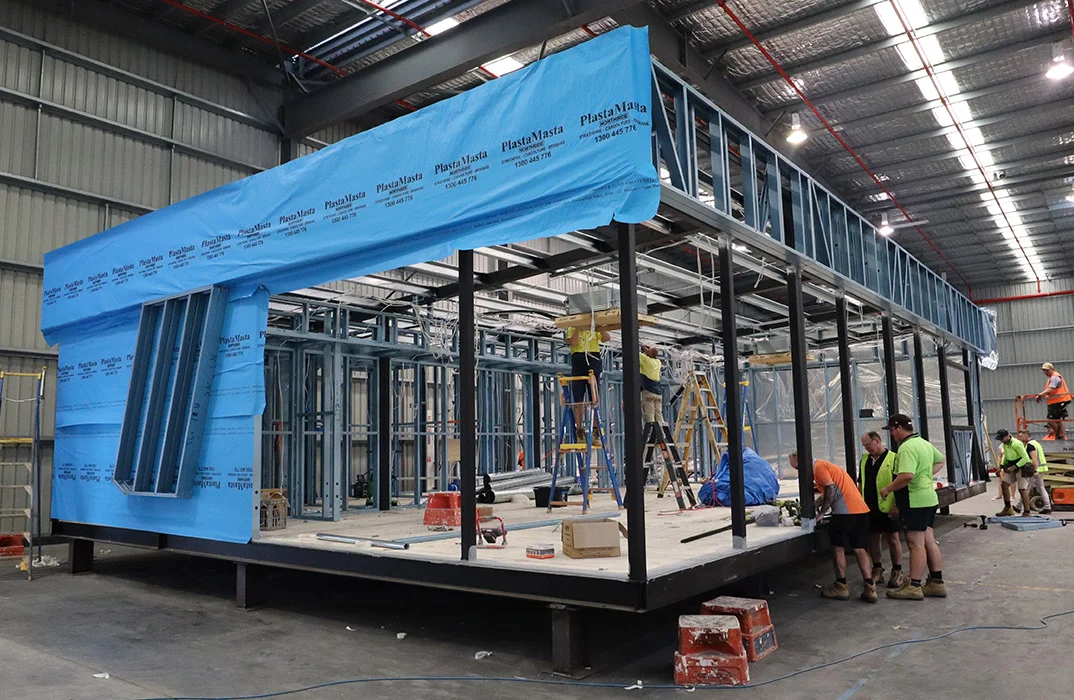Sustainability - VOLO Modular
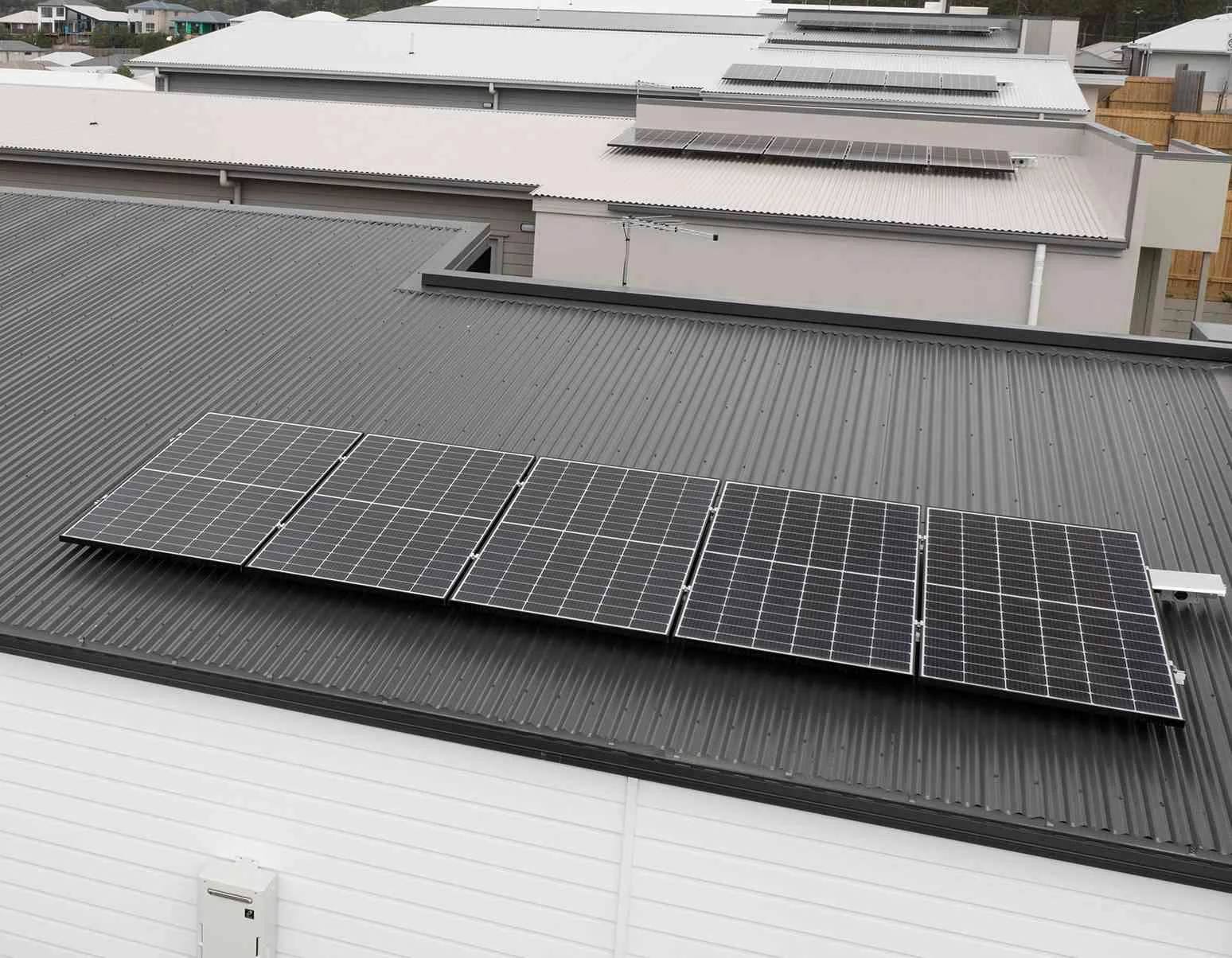
Sustainability
VOLO’s modular construction reduces waste and pollution to minimise the impact of the process on the environment.
Traditional construction produces enormous amounts of waste, most of which ends up in landfills, polluting our environment. Construction rubbish is minimised as components are pre-manufactured in the factory.

Volo has a target to achieve net zero carbon emissions by 2050.
Volo deliver buildings that are better for people and the planet. Market expectations of the carbon performance of property assets is changing rapidly. This increases the risk that carbon intensive assets may become stranded if action is not taken to decarbonise them. Whilst the market is not yet consistently accounting for carbon intensity in property valuation, asset owners need to be aware of this risk.
Onsite builds are constructed using materials, components, and products. All of this material has to be extracted from the ground or (in the case of timber) grown, transported to a facility to be processed, transported again (perhaps numerous times) to be fabricated into a product, transported to site, and craned into place. All of these processes result in the emission of greenhouse gases – fuel for deliveries, and to heat, shape and treat, as well as releases from manufacturing processes.It is becoming clear that embodied carbon makes a significant contribution – between 30% and 70% of a typical building’s total lifecycle emissions. Our goal has to be for the whole lifecycle emissions of our buildings to be net zero, not just operational emissions. In pursuing this we view key decisions through the lens of whole life carbon impact. This approach ensures that the trade-offs between embodied and operational carbon that are inherent in many of our key decisions become explicit within the decision-making process.
Volo has set goals towards net zero carbon requires a sequential approach to ensure that critical decisions are made at the appropriate point in the design process. Below are examples of the types of solutions that together may contribute to an effective strategy for a net zero carbon building.
PASSIVE DESIGN
Fundamental decisions made at the earliest stages of the design phase – including massing, floor-to ceiling heights and facade design – have significant carbon impacts through a building’s full lifecycle. Good passive design not only delivers buildings that emit less carbon in operation, they are also often more comfortable and achieve higher levels of occupant satisfaction. Such buildings also tend to be more flexible, so they last longer. Some passive design approaches, such as those involving heavyweight structures, can be naturally high in embodied carbon. Design teams need to consider the embodied-operational balance actively throughout the design process to develop the optimum combination of measures to minimise whole lifecycle carbon.
BUILD CLEVER
Reuse materials. If it’s not possible to refurbish an existing building in its entirety, the reuse of materials during the construction of new build developments should be explored. This will reduce embodied carbon and is one way of bringing circular economy principles to life.
MINIMISE WASTE
VOLO Modular’s offsite prefabrication allows highly efficient processes to replace less efficient onsite construction of individual building elements. At the same time, our offsite prefabrication often provides workers with safer conditions. If prefabrication is carried out close to a development site further carbon reductions can be achieved thanks to lower transport emissions.
TRANSFORM AND REUSE
In most cases, constructing new buildings generates more carbon emissions than repurposing existing buildings. This is primarily thanks to existing assets ‘bringing with them’ lower embodied carbon. The inherent carbon disadvantage of most new property development is a fact that needs to be faced. Any organisation seeking to achieve net zero across its property assets should embed a process that encourages the exploration of refurbishment as a preferred option at the outset of each potential new building development or investment in newly built assets.
EFFICIENT SYSTEMS & SWITCHING TO ELECTRIC
All systems – from heating and air conditioning to lighting – must be designed to be as efficient as possible with good control to maintain effective use. Minimising operational carbon in this way is an important aspect of net zero design. Typically, VOLO Modular supply buildings with zero carbon energy, which means switching from an oil to an electric system. Depending on building typology, it is likely that either heating or cooling will be the single biggest source of a building“s carbon use, and moving it to an electrical source will reduce building emissions as the electricity grid transitions away from fossil fuels and towards renewable and low carbon generation.
DEMAND MANAGEMENT
Reducing operational impacts is not just about how much energy is used overall, but when it’s used. Active demand management shifts energy demand away from peak periods when supply emissions are at their highest. It also allows for reduced infrastructure capacity, supporting building operators to make best use of variable renewable generation. Active demand management can simultaneously deliver reduced connection charges. From automatic load shedding and battery technologies in commercial buildings to smart home appliances, there is a range of ways that demand management can be enabled.
ONSITE RENEWABLES
Where practicable, onsite renewable generation, such as solar photovoltaic (PV) panels, should be explored. However, a lifecycle cost and carbon appraisal should be conducted to determine feasibility of any onsite renewable generation. Not all sites or buildings can generate enough renewable energy to make installation worthwhile.
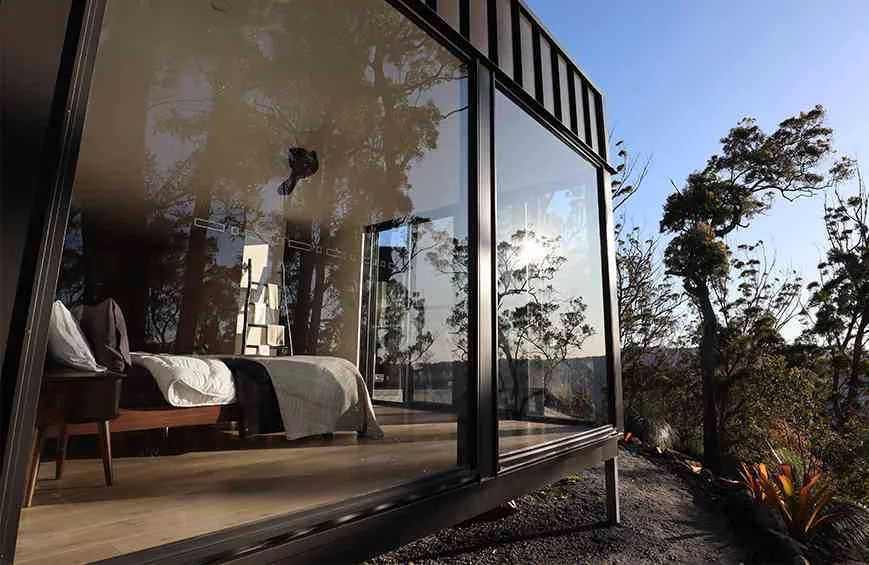
Unique Selling Position
Volo Modular constructions already exceed the
National Construction Code of Australia, we are expected to meet the significant uplift scheduled for 2022, and we have already shown we can exceed those planned for 2025, because Zero Carbon Housing is in our DNA.
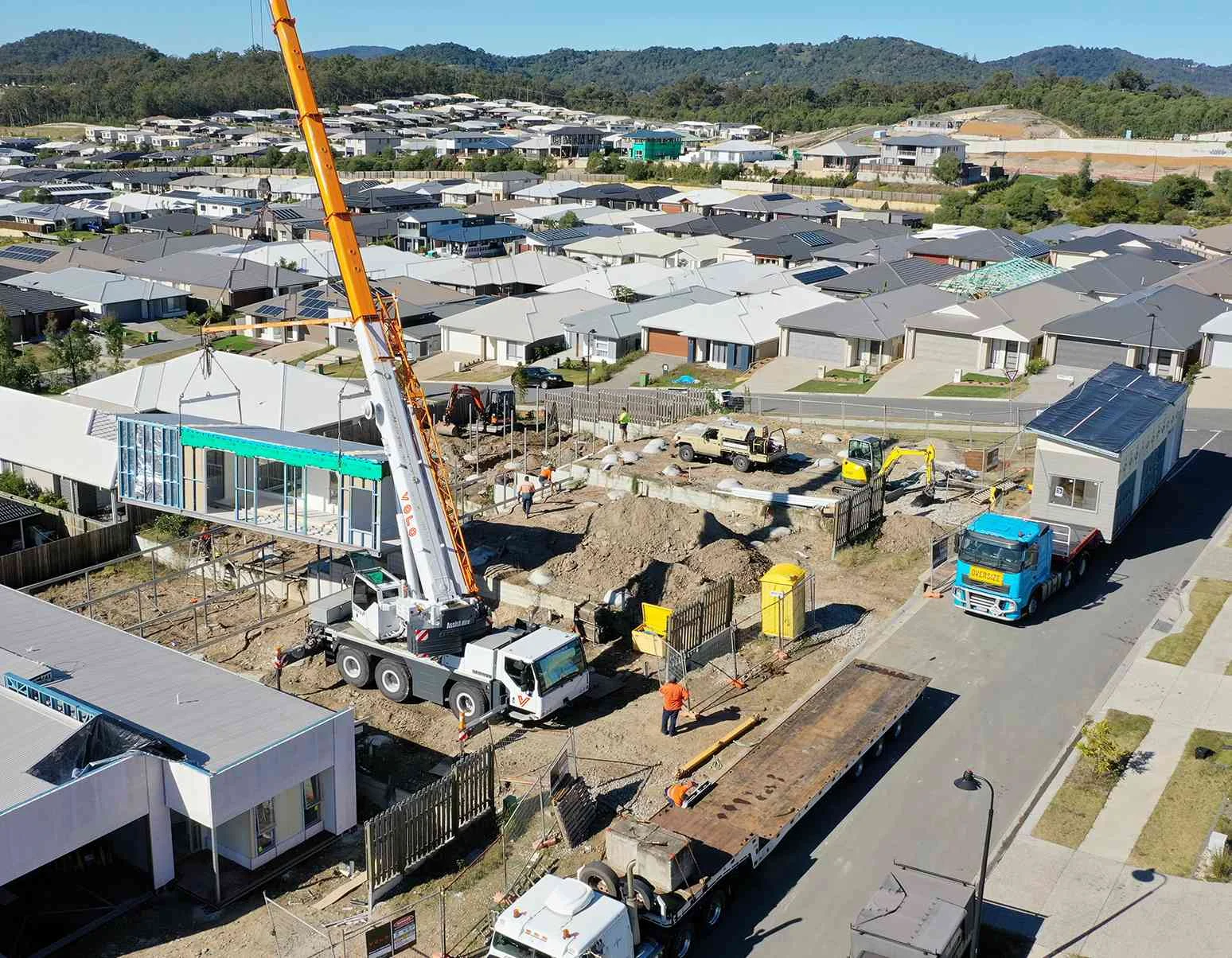
VOLO MEANS ‘WITHOUT COMPROMISE’
Modular doesn’t mean you’re boxed-in for options.
In fact, VOLO modular homes reflect the design specifications of the most sophisticated
site-built projects. Every home we build incorporates:
FLEXIBILITY
Exclusive 10 Year Warranty
Modern interior Projects
Fair Personal Estimate
0
HAPPY CLIENTS
0
AMAZING WORKS
0+
AWARDS WINNING
0
OPERATED YEARS
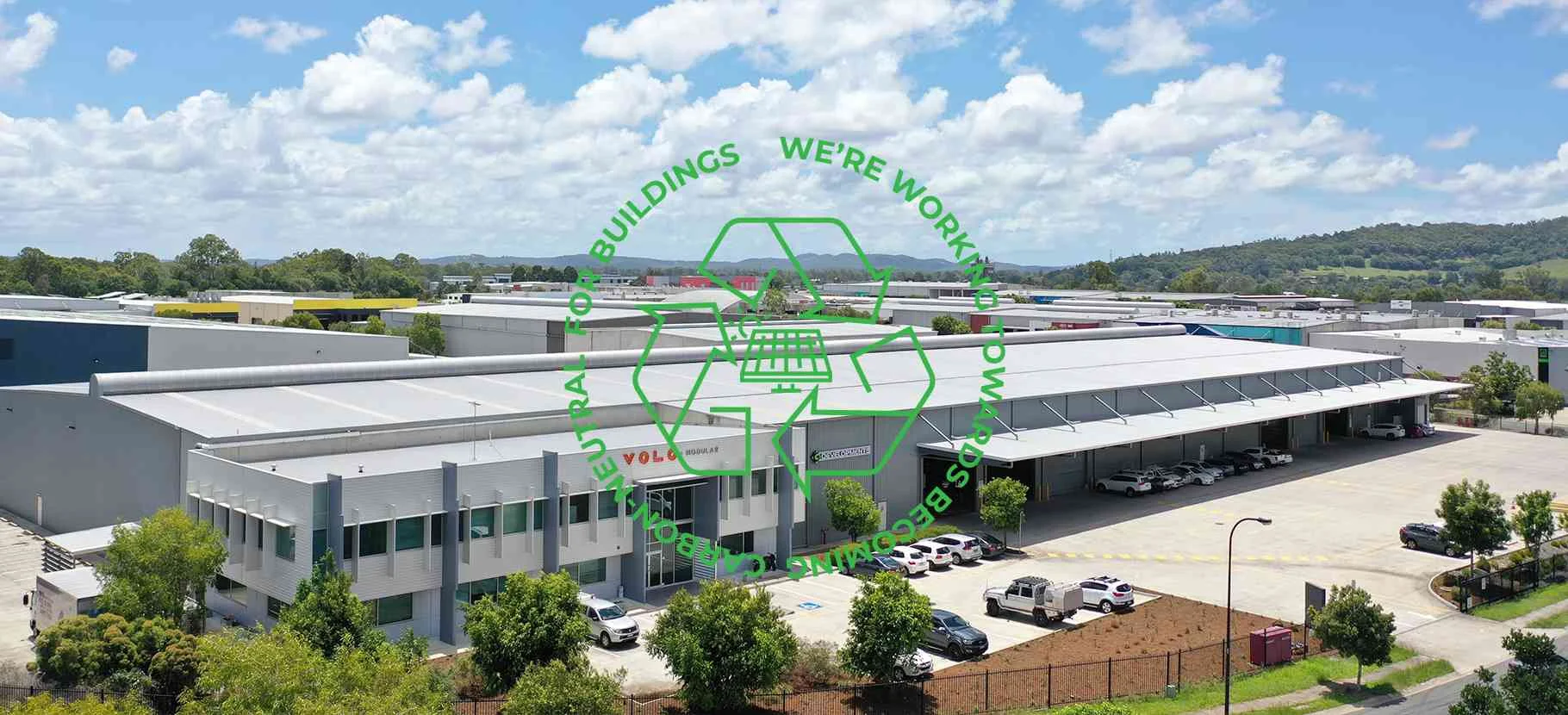
Our Expertise
Interior Design
AutoCAD
Lighting
3D Skills
Very Carefully planned ot our profectional work. Committed to delivering high quality projects and innovate design. it is so importent for us because or customer trust bield for our company.
Very Carefully planned ot our profectional work. Committed to delivering high quality projects and innovate design. it is so importent for us because or customer trust bield for our company.
Very Carefully planned ot our profectional work. Committed to delivering high quality projects and innovate design. it is so importent for us because or customer trust bield for our company.
Very Carefully planned ot our profectional work. Committed to delivering high quality projects and innovate design. it is so importent for us because or customer trust bield for our company.
Very Carefully planned ot our profectional work. Committed to delivering high quality projects and innovate design. it is so importent for us because or customer trust bield for our company.
Very Carefully planned ot our profectional work. Committed to delivering high quality projects and innovate design. it is so importent for us because or customer trust bield for our company.
Very Carefully planned ot our profectional work. Committed to delivering high quality projects and innovate design. it is so importent for us because or customer trust bield for our company.
Very Carefully planned ot our profectional work. Committed to delivering high quality projects and innovate design. it is so importent for us because or customer trust bield for our company.

